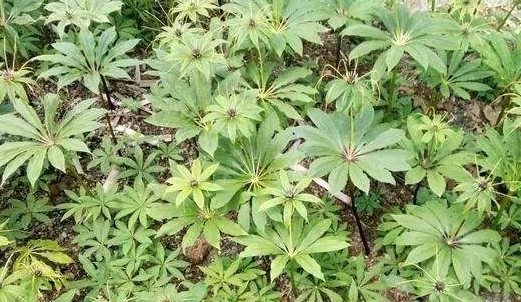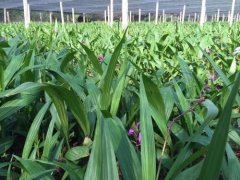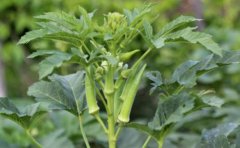How to plant heavy buildings? Introduction to planting techniques and cultivation management techniques of Rhizoma thunbergii
Chonglou is a common and commonly used traditional Chinese medicine, which is mainly used for snakes and insect bites and for the treatment of swollen throat and other symptoms. Because this kind of medicine is often used, so the demand is relatively large, so many people plant it, so do you know how to plant heavy buildings?

Introduction of planting techniques and cultivation management techniques of Rhizoma thunbergii
First, land selection and land preparation: the places where heavy buildings are planted should be in areas with high shade and high shade. Chong Lou is a shallow root plant, which grows slowly and has high requirements for soil. Therefore, the soil planted with heavy buildings should be loose and porous and rich in organic matter.
Second, raising seedlings: choose seeds with full grains, no threat of diseases and insect pests, and no mildew and deterioration. Disinfect the soil with 0.5% carbendazim solution the week before sowing. Sowing can be sowed on demand. After sowing, cover the top with rotten leaves and irrigate them thoroughly. Remove weeds in time when they are found. In the process of cultivation, the mulch can be reduced appropriately to increase the light.
Third, timely transplanting: dig out the seedlings when the adventitious buds are formed in the winter of the third year, and the transplanting season is best in winter. It is necessary to ensure transplanting with soil to ensure that the terminal buds and fibrous roots are not damaged, so as to improve the survival rate.
Fourth, do a good job in field management:
1. Weeding after ploughing: after planting heavy buildings, it is necessary to do a good job of weeding by ploughing. Give priority to shallow ploughing to avoid excessive ploughing to damage the roots. Ploughing and weeding should be combined with soil cultivation and fertilizer should be applied to ensure the safety of heavy buildings to survive the winter. In the process of weeding, we should avoid harming the root system and underground rhizome of the heavy building, so as not to affect the normal growth of the heavy building.
2. Do a good job in water and fertilizer management scientifically: there are more Rain Water during the growth of heavy buildings, so there is usually no need for irrigation, and field drainage should be done well in the season of concentrated rainfall. Heavy buildings need topdressing about twice a year, once in spring and once in winter.
3. Do a good job in the prevention and control of diseases and insect pests: there are mainly root rot, leaf blight, ground tiger, grub and so on. The disease in the field reaches the control standard, and root rot of heavy building can be controlled by root irrigation with 500 times liquid carbendazim or 200 times liquid quicklime. Heavy building leaf blight can be sprayed with 200-fold Bordeaux solution in the field, which has a good control effect. Ground tiger and grub can be sprayed in the field with 2.5% EC 20 mL and water 50 kg, and the control effect is remarkable.
- Prev

How to grow bletilla striata? How to grow bletilla striata?
Bletilla striata is a kind of traditional Chinese medicine, medicinal value is very high, planting economic benefits are also relatively high, so there are many people planting this traditional Chinese medicine, do you want to plant it? Let's learn about the cultivation methods of Bletilla striata together. The cultivation method of Bletilla striata:
- Next

Balcony okra planting: in what season do okra grow? How to plant okra seeds
Okra is a very popular vegetable. Now many people choose to grow their own vegetables. Okra is one of them. How to grow okra on the balcony, how to plant okra seeds, and in what season? Balcony okra planting: 1. Okra
Related
- A course of planting techniques and methods on how to grow carrots
- How to plant the latest tulips?
- Is it better to pick tea in the morning or in the afternoon? When is the best time for tea to be picked? what is the third or fifth tea?
- Launch Yuanxiao Happy combination Haocha + Tea Yuan healthy Taste
- Penghu Tourism "Fireworks 20 Parade with You"
- 2022 West Lake Happiness holds "Digital Revitalization Voucher" and draws iphone13 and laptop.
- Banqiao Fuzhou social houses are designed to change start-up combined with police elimination to create a safe and livable environment
- The convenient measure of "mechanical weeding" in Xinbei has been abused and the Agriculture Bureau has imposed heavy penalties on the illegal land consolidation.
- Changgeng University Joins Hands with Four Memory Factories to Rescue Memory Talent Shortage
- The list of Taiwan's top 100 MVP managers is listed by the Director-General of the Farmers' Association of Sanxia District.

